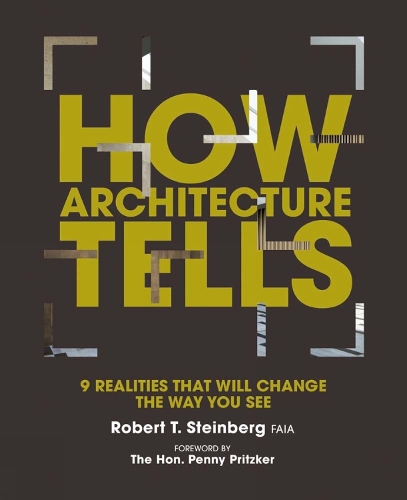
How Architecture Tells: 9 Realities that will Change the Way You See
(Hardback)
Publishing Details
How Architecture Tells: 9 Realities that will Change the Way You See
By (Author) Robert Steinberg
Foreword by The Hon. Penny Pritzker
By (author) Gerald Sindell
Designed by Hoop Design
Oro Editions
Oro Editions
24th December 2021
United States
Classifications
General
Non Fiction
720.103
Physical Properties
Hardback
296
Width 218mm, Height 269mm
1780g
Description
The general reading public is likely to think of architecture as buildings. But, with this book, Robert Steinberg would like to help readers understand that architecture shapes lives. Architecture can help communities integrate and thrive. Architecture can touch us, influencing how we feel, and how we interact with others. In short, architecture can fundamentally improve our quality of life.
As a young graduate architect fresh from Berkeley, Steinberg began to discover the potential of architecture to shape communities. Working with his father, an architect who had studied with Mies van der Rohe (and whose father was also an architect), one of Steinbergs first projects was to draft and redraft a parking garage in downtown Silicon Valley, CA. As he mediated between the two architects in charge of the projecthis father and the city architecthe noticed that with each evolution, the garage became more beautiful and refined. And with each improvement, this garage became more able to succeed in the goal of reviving the dying downtown core of Silicon Valley.
The garage was a huge success, and Steinberg began to codify what he had learned. Thanks to the garage, he wrote the first of what would become the 9 Realities of Architecture: Architecture is the Pursuit of Perfection a magnificent take-away from a humble parking garage project. As Steinberg eventually rose to become CEO of his firm and grew it into a global practice with six regional offices including Austin and New York, and a major office in Shanghai, he used his drive for creating thriving communities to eventually touch the lives of countless people around the world.
Reviews
"The
principles that Rob has employed throughout the course of his career as
an architect reflect a profound understanding and embrace of the
relationship between people and their environment. These principles -
that the built environment is inherently social; that architecture is an
opportunity to integrate intuitive understanding, beautiful design, and
natural forces; that the combination of these can result in new
insights - these principles also apply when we consider what creates
strong, thriving communities.
"For those who lead through design, the principles in How Architecture Tells
provide exceptional guidance as we navigate the complexities of what
exists and what could become. Staying true to a vision that has a clear
and inviting narrative helps build community support, while being
responsive to the context in which we operate includes the community
from the point of inception.
"Cities are always in the process of being
reborn. New buildings are created and old ones are torn down or
repurposed. People flow in and out of neighborhoods and towns. Styles
and norms change and one day we embrace the car and the next, walking.
There is no guarantee to how our cities will evolve and we all know what
it feels like to exist in places that ignore the human experience. But
if we keep the principles of Steinberg's How Architecture Tells in
mind, every new change can bring with it greater beauty and
inspiration, and every change can enhance our connections - to each
other, and to the places that hold us." --Alicia John-Baptiste, President and CEO of SPUR -- The SF Bay Area Planning and Urban Research Assoc.
"Students of architecture should read this book. It is at once a theory and description of architecture intertwined with the deeply personal story of one architect. It shows the imperative that architecture is indeed powerful when it is focused on making human lives better." --John Barton, Director, Stanford University Architecture Design Program
Author Bio
Robert Steinberg, FAIA, is chairman of the global architecture firm Steinberg Hart. He is a Berkeley-trained, third generation architect. Steinberg transformed his fathers primarily residence-focused practice in Silicon Valley into a global powerhouse that has, among other achievements, greatly impacted the Chinese approach to housing their senior population.
The Hon. Penny Pritzker was the United States Secretary of Commerce during the Obama administration, is the founder of Vi Senior Housing, PSP Capital Partners, and Pritzker Realty Group.
Gerald Sindell, co-author, is the author of The Genius Machine, New World Library (2009), and founder of Thought Leaders Intl.
Adam and Catherine Hooper of Hoop Design have designed for the Tate Gallery in London, and Phaidon Publishing among many others. Among their titles is Phaidon Design Classics (three volumes, Phaidon, 2006).
